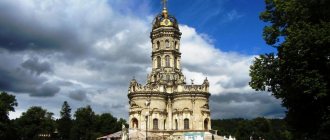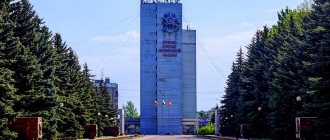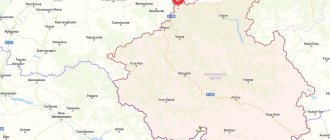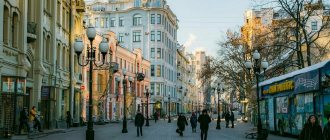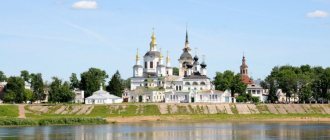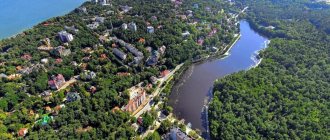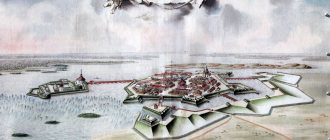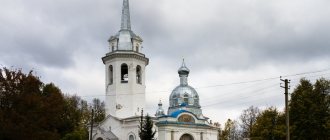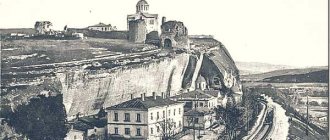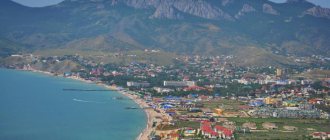One of the elements of understanding the past of a country is the history of the city. Kursk is quite interesting in this regard, since it was founded a very long time ago and can represent the events of the Russian state from princely times to the present day. In addition, the city is also interesting because it is located near the borders of our homeland. So, how did Kursk live throughout its existence? The history of the city, briefly outlined in this article, will help find the answer to this question.
Geographical location
Let's find out where this settlement is located before moving on to such an interesting topic as the history of the city. Kursk is located in the west of the European part of the Russian Federation, at a distance of 450 kilometers southwest of the capital of our homeland, Moscow. The city is located in a temperate climate zone with a temperate continental climate. It is the administrative center and largest city of the Kursk region.
The territory occupied by the settlement is about 190 square meters. km. The height of the center of Kursk above sea level is 250 m. The largest river in the city is the Seim. In addition, a number of tributaries of this water artery flow through Kursk.
Kursk Airport
In Kursk there is the Kursk-Vostochny International Airport, which is located 7 km from the city center. The airport was built in 1940. The airport is open from 3:00 to 18:00 from Monday to Friday. It is a jointly based airport: in addition to civil aircraft, the airfield serves military aviation.
Popular destinations for charter and regular flights: Voronezh, Moscow, Sochi, St. Petersburg, Belgorod, Anapa, Arkhangelsk, Mineralnye Vody, Krasnodar, Rostov-on-Don, Simferopol, Yerevan, Gelendzhik. The airport's capacity is 12 aircraft during operation of the airfield and 100 passengers per hour. The annual passenger flow is more than 30 thousand people.
On the territory of the airport complex there is a medical center, a police station, ticket offices, a special room for passengers with disabilities, and a luxury lounge.
Foundation of the city
Where does the history of the city begin? Kursk is one of the most ancient settlements in the Russian Federation. It was founded in the first half of the 10th century. There is no exact date of formation of this settlement, but the first mention of it is found in the biography of Theodosius of Pechersk. True, even there the exact date of the life of this saint is not indicated, with which the formation of Kursk could be compared. But this event should have happened no later than 1032. Even then it was a large settlement with developed trade, so its actual foundation should have occurred much earlier.
At the same time, archaeological data suggest that the first settlement on the site of modern Kursk arose no later than the 8th century. It is quite possible that from this date people lived here continuously.
origin of name
What is the history of the name of the city of Kursk? It is named after the Kur River. This is a small river, which is a tributary of the Tuskari River, which, in turn, flows into the Seim on the territory of the modern city. In ancient times, the core of the settlement was formed near the Kur River, from where Kursk received its name.
Linguists have not established the exact meaning of the name of the river, but there is an assumption that it came from the word “kurya”, which means backwater or river bay. True, there is another version among the people, which says that the name of the city comes from the name of partridge or chicken.
Some scientists are trying to derive the name from Turkic languages. In their opinion, Kursk translates as “security city.”
Note to pilgrims
In the heart of the ancient city there is the Znamensky Cathedral, which is significant for Kursk residents and interesting for guests. The temple was repeatedly destroyed, rebuilt, and even used as a cinema. Today the cathedral has been completely restored, and, like 200 years ago, continues to impress with the splendor of its architecture and the grandeur of its bell tower.
Not far from the main square of Kursk, stands a building atypical for the city - the Roman Catholic Church of the Assumption of the Blessed Virgin Mary. It is made in a neo-Gothic architectural style, curious on the outside, educational on the inside. Coming here, you can listen to organ music or a church service and admire the beautiful view of the city.
Princely times
Kursk became the center of an appanage principality until 1095, when Vladimir Monomakh, at that time the Prince of Chernigov, and later the Great of Kiev, appointed his son Izyaslav Vladimirovich to reign in this city. But already in 1095, Izyaslav, by order of his father, retired to rule in Murom. In 1096, the prince died in one of the internecine battles. Despite his short reign, Izyaslav managed to build a fortress in Kursk.
The history of the city of Kursk for children is most interesting when it comes to Prince Vsevolod Svyatoslavovich, nicknamed Bui-tur. He is one of the main characters in The Tale of Igor's Campaign. This prince became famous for his incredible strength and courage. Even before his reign, Kursk turned into one of the main fortress borders, designed to protect Rus' from raids by the Polovtsians and other nomads.
In 1180, Vsevolod became Prince of Kursk and Trubetskoy. During his reign, he became famous for his participation in numerous campaigns together with other princes against the Polovtsians. The most famous is the campaign of 1185, sung in the “Tale of Igor’s Campaign,” when he, together with his brother Igor Svyatoslavovich, Prince of Novgorod-Seversky, was captured by the Polovtsians. Vsevolod returned from captivity only in 1188. In 1196 he died.
Taking part in the infamous Battle of Kalka against the Mongols in 1223, the inhabitants of Kursk also sent their garrison to the Russian army. In 1238, during Batu's invasion, the city was destroyed by the Mongol-Tatars. After this, Kursk was rebuilt, but was again devastated in 1285.
In 1362, the Grand Duke of Lithuania Olgerd managed to wrest the city from under Tatar rule and annexed it to his lands.
As part of the Russian state
In 1508, the history of the city changed radically. Kursk was included in the Grand Duchy of Moscow under Vasily III. It became one of the links in the defense of the resurgent Rus' on its southwestern borders simultaneously against the Polish-Lithuanian Commonwealth and the Crimean Khanate.
In the 15th and first half of the 16th centuries, Tatar raids became more frequent, which caused the desolation of Kursk. But the city was revived again in 1586. This date is considered to be the second founding of Kursk. Under Ivan the Terrible, rebels and unreliable people were exiled to this border city. In 1596, a new fortress was built, which became the key to the security of the city’s borders and population.
Throughout the first half of the 17th century, Kursk was repeatedly attacked by Poles, Nogais and Crimean Tatars, but they never managed to take this impregnable fortress.
Soon the residents of Orel were resettled to Kursk. By 1678, it already numbered about 2,800 people, which was not so small for a border fortress of that time. This was due to its rather favorable economic and geographical location. The road from Moscow to the Crimean Khanate passed through Kursk, and there was also a fork to Kyiv, which ensured developed trade.
Due to the fact that Kursk at that time had quite strong ties with Little Russia, in 1708 it was included in the Kyiv province.
Kursk
origin of name
Named after the location where the Kur stream flows into the Tuskar River. The hydronym may be related to the popular term kurya - “river bay, narrow river channel, backwater.” In addition, there are several alternative versions explaining the name of the city. In particular, the name is associated with partridges that lived in this area. Another theory interprets the origin of the name of the city from chicken; these poultry have been bred here since ancient times; as proof of this theory, one can cite the names of several nearby villages with “chicken names”. But maybe the “chicken names” have nothing to do with the name “Kursk”, the word “kur” from Old Norse means “settlement”, and since Kursk arose on the site of the actual transition from the “Varangians to the Greeks”, it can be assumed that the founders the settlements or gave the name were Varangians or Vikings.
Story
Kursk was first mentioned in the Life of Theodosius of Pechersk (not earlier than 1032, when the Dnieper left bank came into the possession of Yaroslav the Wise). The first mention in the Laurentian Chronicle is in 1095. Then the Kursk prince Izyaslav Vladimirovich built a fortress; since the end of the 11th century, Kursk has been one of the most powerful outposts on the border of Kievan Rus; The original Kursk fortifications were dismantled in the middle of the 17th century. In 1185, Prince Vsevolod sent a squad against the Polovtsians; This unsuccessful campaign of the Russian princes is described in “The Tale of Igor’s Campaign.” In 1238 the city was completely destroyed by the Tatar-Mongols.
From 1360 to the end of the 15th century, Kursk was part of the Grand Duchy of Lithuania. In the 16th-17th centuries, Kursk was an important defensive point of the Moscow State (it became part of it in 1508) on the borders with the Polish-Lithuanian Commonwealth and the Wild Field. There are known references to Kursk in the “Book of the Big Drawing” (1517), in the decree of Ivan IV the Terrible (1582; the sovereign ordered the exile of “kromeshniks, rebels, rebels” “to the outlying cities of Sevsk and Kursk”). In 1596, a new fortress was erected. At the beginning of the 17th century, Kursk was repeatedly attacked by Polish-Lithuanian troops (in 1612, 1616, 1617, 1634), Crimean Tatars, and Nogais, but the Kursk fortress was never taken; in 1616 there were over 1.3 thousand people in the Kursk garrison. Residents from Orel and other southern Russian cities were resettled to Kursk (in 1678, Kursk already had 2.8 thousand inhabitants). The city developed due to its advantageous geographical position (the shortest route from Moscow to Crimea, the road leading from Kursk to Kyiv). A foundry was organized, and the kvass and salt industries developed. There was active trade (mainly grain) with Ukrainian lands (Gostiny Dvor was built in the mid-17th century).
In 1708 it was assigned to the Kiev province, in 1727 - to the Belgorod province, from 1779 the center of the Kursk governorate (the first governor of Kursk was Field Marshal P. A. Rumyantsev), in 1797 the center of the Kursk province (the first governor was S. D. Burnashov). In 1785, the year the city Duma was formed, there were 7,590 inhabitants in Kursk. In the 18th century, Kursk became a major trading city and finally lost its border significance. Leather, brick, and lime production were developed. Numerous stone structures were built (shopping arcades, etc.). There was a shipping company in Kursk (it was managed by the governor himself) - merchant ships were sent down the Seim towards Kyiv.
The main event of the city was (and is still held) the annual religious procession from the Znamensky Monastery (founded in 1612) to the Korennaya Hermitage, next to which the Korennaya Fair arose, one of the largest in the country (transferred to Kursk in 1878).
After the great fire that devastated Kursk in 1781, a new general plan of the city was adopted, according to which the central position was to be occupied by shopping arcades (which were erected on the central square, called Red). In 1768, the stone Ilinskaya Church appeared (it was famous for its choir of singers), in 1788 the Kazan Cathedral was built in the Baroque style; By 1778, the Trinity-Sergius Cathedral with rich interior decoration was completed.
The first school was opened in the city in 1780, and a noble school was opened in 1783. A men's gymnasium was organized in 1808, and a theological seminary in 1817. A women's gymnasium opened in Kursk only in 1870.
In 1797, a printing house opened in Kursk. Initially, mainly fiction was published. In 1792, a theater appeared in the city (private, owned by the Barsov brothers).
At the beginning of the 19th century, Kursk was not only a commercial but also an industrial center. In 1846 there were 70 factories and factories in the city. At the beginning of the 19th century, the city already had a hotel (maintained by Colonel Poltoratskaya). In memory of the events of 1812, the Znamensky Cathedral was erected in the city (consecrated in 1826).
Since the late 1860s, Kursk has been a railway junction (in 1869, Alexander II arrived in the city by rail). At the end of the 19th century, Kursk became an important center of the food industry (flour milling and sugar); in 1883 a candle factory was put into operation (since 1935 a chemical pharmaceutical plant). Urban improvement developed rapidly: the appearance of a water supply dates back to 1874, and tram traffic to 1897 (organized by the Belgian, which also carried out work on street lighting). After the redemption reform of 1861, banks began to open in the city - a branch of the International Commercial Bank, a city public bank, and others.
In 1903, the Kursk Regional History Museum received its first visitors. Soon the first cinemas appeared in Kursk (Illusion, Mirage, Gigant, etc.), a large library with a reading room, two public gardens - Lazarevsky and Livadia, the latter operated a summer theater. In 1896, a Catholic church in the neo-Gothic style was built in the city, restored and again transferred to the Church at the end of the 20th century. In total, at the beginning of the 20th century, there were 21 Orthodox and one Edinoverie churches, a Catholic church, two synagogues, Lutheran churches, male and female monasteries in the city.
At the beginning of the 20th century, with the dominant role of the food industry (in Kursk there was brewery No. 1, one of the largest in Russia, owned by A.K. Kvilits), other industries also developed; Thus, in the 1900s, 4 sieve-punching workshops appeared in the city (of which the largest was Tikhonov’s workshop, the products of which were sent to the foreign market - to Germany, Austria-Hungary, etc.). Several machine-building enterprises were organized (in 1914 there were 7 of them, one of them was a railway enterprise). Working conditions at Kursk enterprises were difficult, and strikes often occurred (for example, in 1901-03, workers of Kursk sugar factories went on strike). Kursk workers took part in the general political strike during the revolution of 1905-1907; The strike was organized by Kursk railway workers.
On November 26 (December 9), 1917, Soviet power was proclaimed in the city. On September 20, 1919, volunteer troops under the command of General Denikin entered the city. On November 19, 1919, Kursk was taken by the Red Army.
At the beginning of the Great Patriotic War, Kursk was defended not only by the Red Army, but also by the people's militia. In early November, German troops approached the city; on the night of November 3, Kursk was surrendered to the enemy. The city suffered greatly during the liberation from the German occupation, which lasted until February 8, 1943, when the city was liberated by the 60th Army under the command of General I. D. Chernyakhovsky; During the occupation, about three thousand residents of the city were shot, almost ten thousand were driven away to Germany. The restoration of the city's enterprises began already in February 1944; At the same time, the cultural life of the city was revived - a cinema opened on February 19, and a drama theater opened on February 27. By 1950, the city economy was completely restored.
Back in the 1930s, several large educational institutions appeared in the city: in 1934 - a pedagogical institute (now Kursk State University), in 1936 - a medical institute (now Kursk State Medical University). The development of the system of educational institutions continued in the post-war years: in 1956, the Agricultural Institute (now Kursk Agricultural Academy) began operating, in 1964 - the Polytechnic Institute (now Kursk State Technical University), in 1994 - the Institute of Continuing Education.
Kursk became famous due to the Battle of Kursk and the Kursk Magnetic Anomaly. Among the famous Kursk residents are composer Georgy Sviridov, artist Alexander Deineka, historians Nikolai Druzhinin and Vyacheslav Volgin, Olympic champions Valery Chaplygin, Nikolai Solodukhin, Alexander Povetkin, writers Konstantin Vorobyov and Evgeny Nosov, as well as many other names.
Modern Kursk
Kursk is rich in architectural monuments of the 19th century. The most significant are the mansion of the merchant Khloponin (mid-18th century), the Kazan Cathedral (1778), the building of the former Assembly of the Nobility (late 19th century), the building of the former men's gymnasium, the building of city hospital No. 1 (“Denisyev’s house”, 18th century), the hetman’s chambers Mazepa (XVIII century).
In the city there are 6 museums (local history museum, Museum of the Battle of Kursk, tram, road transport, etc.), 3 exhibition halls (art gallery of the famous native of Kursk A. A. Deineka, exhibition hall of the Art Fund, Gallery of Modern Art), 8 libraries, 3 theater (regional drama named after A. S. Pushkin, theater for young spectators and puppet theater), philharmonic society, 14 houses of culture, 9 cinemas.
There are 27 churches in Kursk (of which one is Catholic, one is Old Believer and one is Baptist). In the 1990s, a theological academy and gymnasium were opened.
Higher education is represented by:
- Kursk State University;
- Technical University;
- Medical University;
- Agricultural Academy;
- Institute of Management, Economics and Business;
- Regional Financial and Economic Institute;
- Regional open social institute.
As of 2006, the city had 7 hotels, 7 stadiums, 2 sports clubs, a sports school, a swimming pool, and a hippodrome. There is a chess club.
The volume of shipped goods of own production, performed works and services on one's own for 10 months of 2007 was 29,500.9 million rubles.
Administrative districts
- Central
- Railway
- Seimsky
Until March 1, 1994, they were respectively called:
- Leninsky district
- Kirovsky district
- Industrial area
Kursk during the Russian Empire
However, already in 1727 Kursk was included in the Belgorod province. But in 1779, under Catherine the Great, this province was disbanded, and the city became the center of the Kursk governorship. Its first head was the famous Field Marshal Rumyantsev. In 1781, there was a big fire in the city, after which it began to be rebuilt. In 1797, the viceroyalty was transformed into a province. From then on, Kursk became a provincial city.
With the expansion of the borders of the Russian Empire, Kursk loses its significance as a border city, but trade is intensively developing in it. The city grew and expanded, industry began to actively develop in it, and a gymnasium was opened in 1808. The history of Zarechnaya Street is connected with the expansion of Kursk across the river. The city of Kursk has become a fairly large regional center. In the second half of the 19th century, centralized water supply appeared and tram traffic was opened.
Automobile highways
The following roads pass through Kursk:
- M2 "Crimea" is a federal highway, which is also part of the European route E105. The total length of the road is 720 km. The highway originates in Moscow and passes through Kursk, Belgorod, Tula, and Orel. The end point of the route is the state border with Ukraine. Road surface: concrete and asphalt.
- P298 is a highway that has the status of an object of federal significance. The route is part of the Asian route AH61 and the European route E38. The road originates in Kursk and passes through Voronezh. The total length of the road is 439 km. Road surface: asphalt.
- E38 is a European route that passes through the territory of 3 countries: Russia, Kazakhstan, Ukraine. The route originates in the city of Glukhov and passes through Voronezh, Saratov, Uralsk, Kursk, Aktobe, Kyzylorda. The final point of the route is the city of Shymkent. The total length of the highway is 3,400 km.
- E105 is a European route with a total length of 3,770 km. The route passes through the cities of Russia, Ukraine and Norway: Kirkenes, Murmansk, Tver, Moscow, Kharkov, Simferopol, Zaporozhye, St. Petersburg, Veliky Novgorod, Petrozavodsk. The final point of the route is the city of Yalta.
Soviet times
In the first quarter of the 20th century, the history of the city of Kursk changed dramatically. A brief summary of the events of those times is that at the end of 1917, Soviet power came to the city. However, this was only the beginning of the Civil War. In September 1919, Kursk was captured by the White Army of General Denikin, but in November it was recaptured by the Red Army. Since then, the city became part of Soviet Russia, and then the USSR.
In 1928, the Kursk province ceased to exist. Kursk became the administrative center of one of the three districts of the Central Black Earth Region, and since 1934 the central city of the Kursk Region.
During the Great Patriotic War, the city was occupied by Nazi troops in November 1941, although it was defended not only by the army, but also by the militia. The liberation of the city took place a year and a half later - in February 1943. In July and August, one of the largest battles of World War II took place near Kursk - the Battle of Kursk.
A year after the liberation, Kursk began to be restored, although the war was still ongoing. In 1953, trams began running along the city streets. Plants and factories were restored in the city.
Bus stations of Kursk
Kursk bus station is located at st. 50 Let Oktyabrya, 114, opposite school No. 40. The bus station operates 24 hours a day, seven days a week and without long technical breaks. You can get to the bus station by public transport, which goes to the “Avtovokzal” stop. There is free parking for cars on the territory of the bus station.
The most popular routes of regular buses: Saratov, Bryansk, Belgorod, Valuyki, Donetsk, Zheleznogorsk, Gorlovka, Yelets, Kaluga, Krasnaya Yaruga, Kurchatov, Lgov, Medvenka, Orel, Poltava, Pyatigorsk, Rylsk, Smolensk, Stary Oskol, Sumy, Tambov, Kharkiv.
Modernity
After the collapse of the Soviet Union, the severity of the transition period affected all Russian cities. Kursk was no exception either. In the 90s, many enterprises closed here, and there was a high level of unemployment.
In the 2000s, due to the general rise of the Russian economy, life gradually began to improve in this regional center. Industry, production, services and trade began to develop, which means new jobs appeared.
In 2012, the 980th anniversary of the city was solemnly celebrated. Currently, the head of Kursk is Olga Germanova. The city is divided into three districts: Seimsky, Zheleznodorozhny and Central. Today Kursk is a modern Russian regional center.
Train Station
Kursk railway station is a junction railway station of the Moscow Railway. Located at Privokzalnaya Square, 1. Belongs to class 1 in terms of volume of work. Station type: local. The number of platforms is 6, the approximate number of tracks is 30. There is free car parking on the territory of the railway station. The opening date of the railway station is 1868. In the railway station building there is a buffet, luggage storage, and a waiting room.
The most popular long-distance train destinations: Belgorod, Moscow, St. Petersburg, Orel, Rzhava, Ponyri, Krivoy Rog, Stary Oskol, Dnepr, Kharkov. Interregional and commuter trains are also serviced at the railway station.
The significance of the history of Kursk
To understand the modern inhabitants of a particular locality, you need to study its history. The past and the present constantly flow into each other, forming a continuous chain of events. Everything that happened today was built on the foundation laid yesterday. That is why the history of the city of Kursk is so important. A summary for children and adults of the historical events that took place in this city is outlined above. But, undoubtedly, this is not enough if you want to learn about Kursk in more detail. The article outlines only the main historical milestones. And for a closer study it is necessary to use mainly primary sources.
According to the educational program, the history of the city of Kursk for grade 2 is included in lessons on the surrounding world. Of course, this helps to familiarize children with the past of their hometown. But adults should not forget about the history of their region. Moreover, residents of other Russian cities should also be interested in events that occurred in various localities of the country in the past. After all, from such pieces of the mosaic the history of our entire homeland is formed into a single whole.
What to see in Kursk?
The Victory Memorial has recently become the calling card of Kursk. Located at the entrance to the city, the Kursk Bulge memorial complex includes: an alley of military equipment, the Arc de Triomphe, the Church of St. George the Victorious, the Eternal Flame, and other memorial buildings. In the area where Kursk is located, there is an equally high attendance of this attraction by both city residents and tourists. People come here to honor the memory of wartime heroes, get acquainted, take photographs with the exhibits, and simply stroll along the artfully designed boulevard.
The history of the region where Kursk is located is reflected in the exhibition of the regional museum of local lore. Exhibitions and excursions are regularly held here, highlighting the chronology of development and features of the region. Among other exhibits: rare books and numismatics, collections of stuffed animals and birds, master classes and various events are organized, for example, “Museum Night”.
